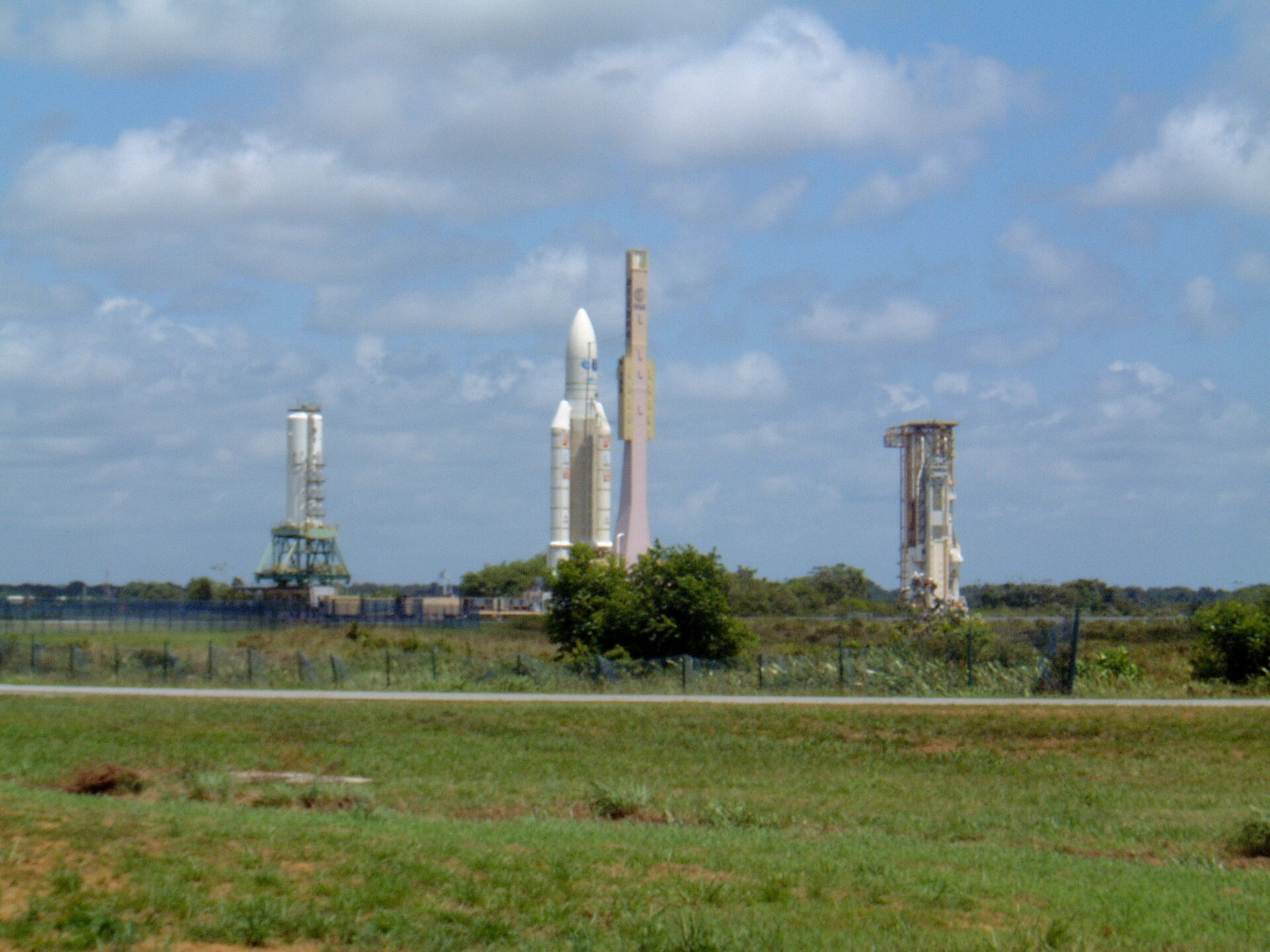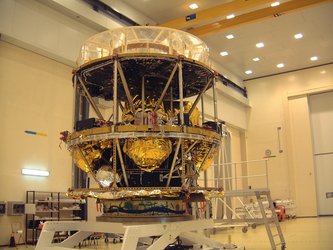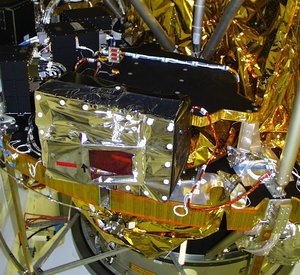MSG-1 Launch Diary
The MSG-1 launch team have been keeping a diary of their preparations for launch. Get an in-depth look at what it takes to prepare the first of Europe's latest generation of meteorological satellite for launch. Read about the arrival of the spacecraft in French Guiana, the extensive series of tests and calibrations of the spacecraft, and the desperate battles with giant green snakes in the jungle near Kourou - all to ensure the satellite is ready for takeoff!
MSG Launch Diary - week 1
19 May 2002
After one week of full activities, a "Welcome to Kourou" party was organised in the "Carbet", a primitive wooden shelter in the forest where people tend to spend their free time, on the border of Kourou River to keep up the high spirits of the MSG Launch Campaign Team.
18 May 2002
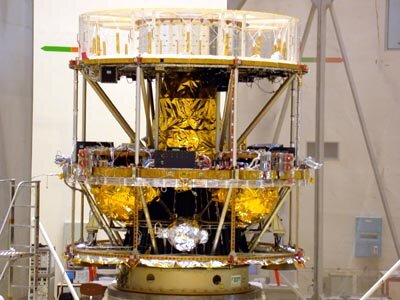
The disconnection and removal of the solar array from the spacecraft shows the heart of MSG-1 nicely. In parallel, we start the preparations for the pressure test validation. This verifies helium and nitrogen pressure, flow indicators calibration and particle counting sampling. It also tests for leaks and checks that all gas lines are clean and within specifications.
It is important to note that the team has worked hard to recover the delay due to the Antonov repair in Cape Verde. This has been achieved and we are back on schedule!
17 May 2002
We inspect the spacecraft and detect no anomalies after the long, 7200 km flight.
After the cleaning, the set-up of EGSE in the clean room and the checkout starts.
16 May 2002
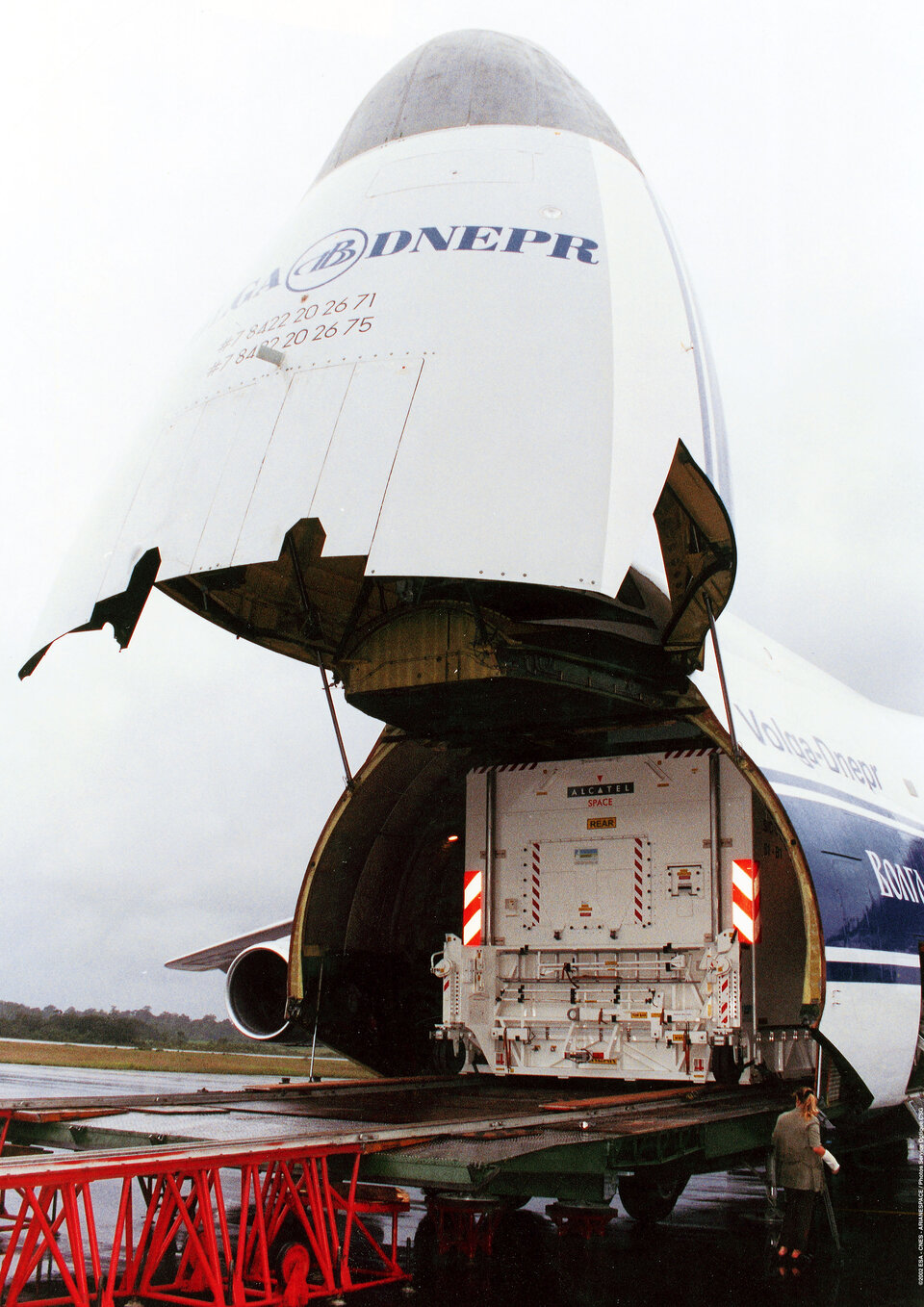
We first clean the satellite container, before moving it to the clean room.
A couple of hours later the MSG satellite shows itself again in the clean room in full splendour after the removal of the container cover.
In addition to these activities, the Electrical Ground Support Equipment (EGSE) documentation and personal belongings of the Alcatel team that also came with the Antonov is unloaded.
15 May 2002
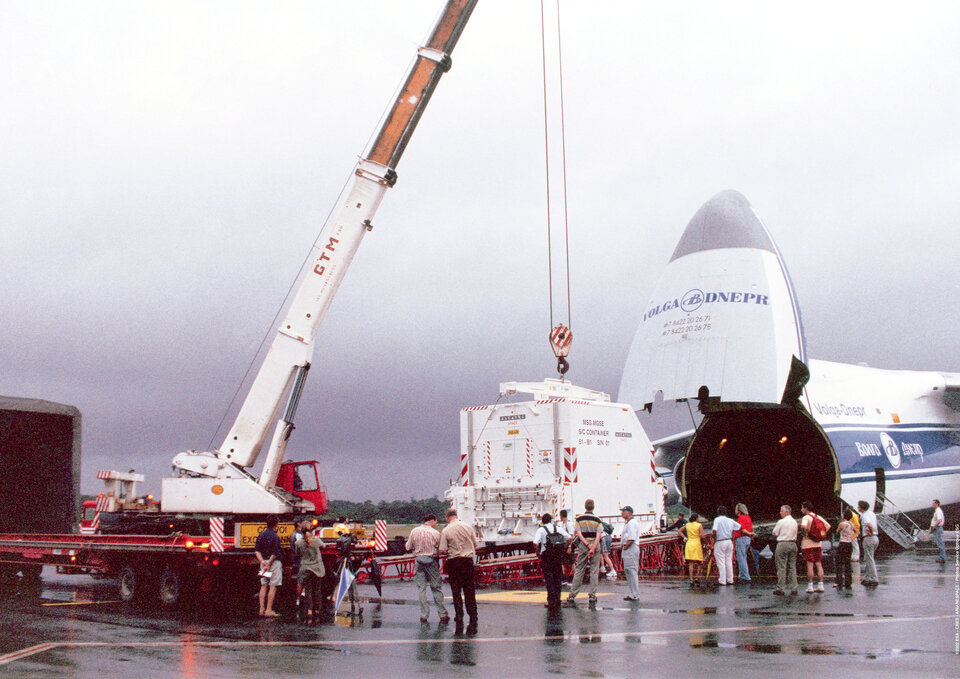
The planning for today's activities is not difficult. It's the same as yesterday's: in anticipation of the Antonov’s arrival, we have to finalise of all network and communication links, as well as validate the Mechanical Ground Support Equipment (MGSE) that arrived earlier by boat.
In the morning meeting confirmation was received on the Antonov's take-off from Cape Verde at 13:30 (local).
After its arrival at Rochambeau Airport in Cayenne, the unloading of the satellite starts. After a smooth ride, the satellite reaches the S1 building at the Centre Spatial Guyanais (CSG) around 22:00 (local) after which the final activity of this long day is to move the container with the satellite into the airlock of the clean room.
14 May 2002
This morning the Antonov, the world's largest aircraft, lifted off from Nice airport with the MSG-1 satellite onboard. Destination: Cayenne, the capital of French Guiana.
Three team members from Alcatel Space Industries, ESA's prime contractor for the satellite, accompany MSG-1 for the necessary monitoring during transport.
It is planned that the Antonov will first land at Cape Verde for refuelling, after which it will continue for the second part of the 7000 km long journey.
The Antonov was expected to land in French Guiana at 16.00 hours (local). Then the satellite container would be unloaded for its transport to CSG at 20.00 hours (local).
Normally during the rainy season, flying spacecraft to French Guiana occurs only during daytime. However, for the MSG-1 an exception was made, because it's important for the MSG-1 satellite to remain at ambient temperature (ideally, 20ºC and 70% humidity). Since the MSG satellite container is not temperature controlled, a day transport might create problems.
Unfortunately, due to some problems with one of the Antonov's motors, the airplane could not take-off after refuelling. We now expect the Antonov to reach Cayenne on 15 May, again at 16.00 hours (local).
13 May 2002
For your information, S1 is the building where the satellite will arrive after its transport from Europe. It will remain there for the first eight weeks of the campaign for health, functional and performance checks.
The usual preparation work starts in anticipation of the satellite's arrival at Centre Spatial Guyanais (CSG), including the S1 acceptance review, network set-up, crane training, and unpacking of the boxes containing the documentation and personal belongings that arrived separately from the satellite.
12 May 2002
The MSG-1 launch team arrived over the weekend to start the necessary preparations for the campaign in Guyane.
Incidentally, Guyane is the local name for what's more commonly known throughout the world as French Guiana. More formally, it’s the Department of Guiana, since it is officially French territory.
We are confident that the MSG-1 launch campaign will run smoothly and that the launch will be a success!


